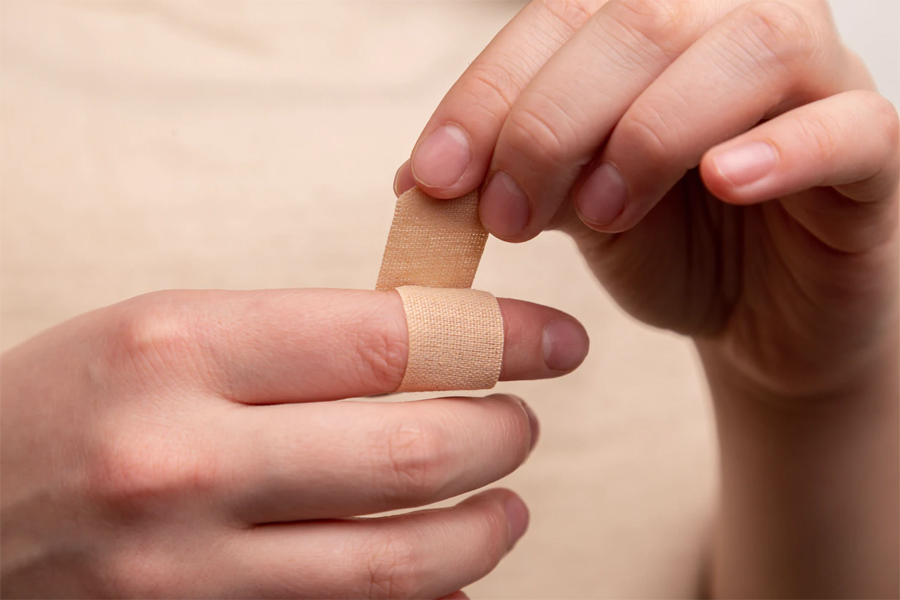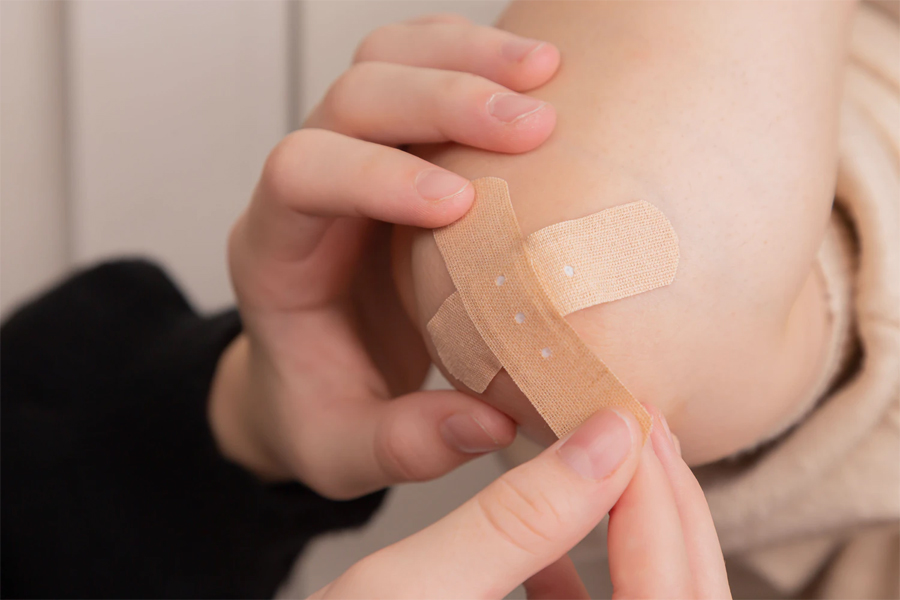Wounds on the body are an eyesore, but more than that, they can become a breeding ground for harmful organisms, including bacteria. Hence, quick and lasting treatment is essential. Whether it’s a laceration, abrasion, puncture, avulsion, etc., you must give your urgent attention.
 Using the appropriate wound treatment can make a lot of difference between a fast recovery and a protracted healing process, unnecessary scars, excruciating pain, and a high risk of infection. Below are some amazing solutions to your wound.
Using the appropriate wound treatment can make a lot of difference between a fast recovery and a protracted healing process, unnecessary scars, excruciating pain, and a high risk of infection. Below are some amazing solutions to your wound.
Swiftly Cleaning The Wound With Mild Solutions
Wound infections happen as a result of exposure to bacteria and pathogens. These harmful organisms can be lifted from surfaces or objects that caused the wound. For instance, a fragment of a broken bottle that caused a skin puncture could have bacteria on it or a rough wall that caused an abrasion.
What to do? Cleanse the face of the wound and its insides with a mild solution. Use a solution made from a slight amount of salt diluted in waterworks ideally since it imitates your body’s internal pH. You can also use mild or diluted soap in water or some purified water, then wipe the surface with clean gauze. Be alert to any debris sheltered in the wound and take it out with sterile tweezers if possible. If the debris is rooted deep in the injury or scattered, you should see a doctor.
Dry Air Can Also Hasten Cell Death For Tissues Exposed
You can keep your wounds covered with sophisticated wound dressings like films and hydrogels. These wound care products are engineered principally to create a moist wound healing environment. Medical researchers discovered the advantages of covering wounds as far back as the early 1960s. At that time, Dr George Winter put out a paper revealing that injuries kept moist healed in circa 12 to 15 days, while the same wound when air-dried healed in as long as 25 to 30 days.
Apply Pressure
Anemia and other severe conditions that lead to a feeble immune system and slow healing are prevented by stopping bleeding immediately it starts. Conceal the wound with an absorbent material like sterile gauze pads or a clean, dry cloth. Then apply pressure for about five minutes. It should stop the bleeding. If the bleeding does not stop or slow, you may need urgent medical attention.
Debridement
When caring for severe wounds, medical professionals typically get rid of dead or infected tissues. This process is known as debridement. You use tweezers to perform a debridement, along with a piercing spoon-like instrument called a curette or a scalpel. An enzyme-based gel is applied as well to cleanse the wound. The surface of the injury can also be flushed using a high-pressure water jet.
Another method of debridement entails using a species of maggots (fly larvae) that are specifically bred for medical reasons. The larvae are positioned on the face of the wound to eliminate dead tissue and drain fluids from the injury. Because debridement can be painful, anesthetic ointments are used to numb the wound before debridement. If doctors expect severe pain, painkillers can be administered to the patient before treatments.
Keep Your Wounds Concealed and Moist
When you keep your wound covered and moist, the healing process is faster, and new skin and tissue start to grow much earlier than if left open and dry. Wounds abandoned to air dry will usually form a scab over the epithelial lining layer, which stalls new granular tissue growth. It slows healing and encourages scar formation, even on minor wounds.
Compression bandages and compression stockings
If restricted blood circulation is causing a lingering wound, compression stockings or compression bandages can come in handy to heal the wound faster. The pressure from these stockings and bandages aids the veins to move blood back and forth to the heart and increases circulation.
If you have had a wound for more than seven weeks without significant signs of it healing, it is medically considered a chronic wound. Wounds like these usually occur as a result of poor blood circulation.
Skin grafts
Skin grafts are ideal as a treatment method if a wound is so large that it cannot heal independently. When performing a skin graft operation, the skin is lifted from another part of a patient’s body – usually the thighs – and moved onto the wound.
There are alternative grafts that are made from human cell products and synthetic materials. Research has shown that these alternative grafts increase the chances and healing pace of venous leg ulcers.
In comparing healing patterns, it has been found that wounds healed totally within six months in 40 out of 100 people who had standard treatment using wound dressings and in 61 out of 100 people who had a skin graft. Protracted foot wounds also healed faster after a skin graft than after conventional wound dressing treatment.
Using Strong Antiseptics to Wash Wounds
Some medical professionals suggest using antiseptics and disinfectants like hydrogen peroxide, alcohol (ethanol), or iodine to clean wounds. However, most of these substances are more appropriate for decontaminating household surfaces and are far too tough on human tissue. They are more likely to harm tissue than heal it.
Interestingly, a 2010 research found out that there is a case for using antiseptic cleansing solutions – particularly in critically colonized wounds – in the following instances:
- When a severe infection has already developed;
- In patients with a history of persistent infection;
- When advanced antibiotics have to be administered to stall the spread of infections such as cellulitis.
Hence, there are limited use cases for antiseptics. You should see a doctor for advice before using antiseptics.
 In conclusion, wound treatment should be taken seriously before wounds get infected. Depending on the size and the severity of the wound, you can clean its surface with a saline solution. If there’s bleeding, you can apply pressure on it. You should also keep the wound moist and covered. For significant and chronic injuries, medical professionals perform operations such as debridement and skin grafts. You should never use antiseptics on your wound without medical advice. Additionally, do not get your injury during a bath or shower. Keep it covered. And consume a lot of protein – it helps to regenerate tissues faster.
In conclusion, wound treatment should be taken seriously before wounds get infected. Depending on the size and the severity of the wound, you can clean its surface with a saline solution. If there’s bleeding, you can apply pressure on it. You should also keep the wound moist and covered. For significant and chronic injuries, medical professionals perform operations such as debridement and skin grafts. You should never use antiseptics on your wound without medical advice. Additionally, do not get your injury during a bath or shower. Keep it covered. And consume a lot of protein – it helps to regenerate tissues faster.

